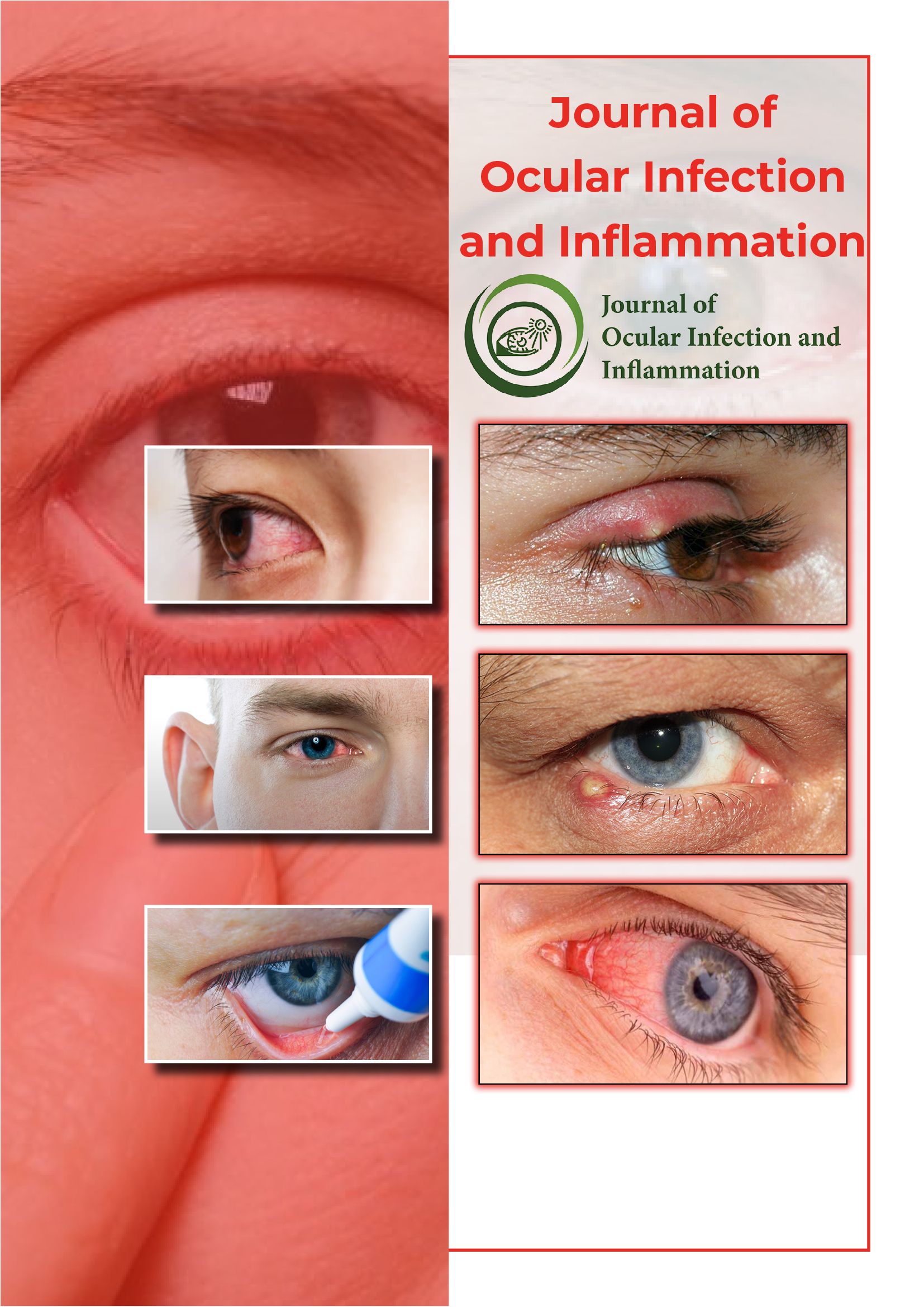Useful Links
Share This Page
Journal Flyer

Open Access Journals
- Agri and Aquaculture
- Biochemistry
- Bioinformatics & Systems Biology
- Business & Management
- Chemistry
- Clinical Sciences
- Engineering
- Food & Nutrition
- General Science
- Genetics & Molecular Biology
- Immunology & Microbiology
- Medical Sciences
- Neuroscience & Psychology
- Nursing & Health Care
- Pharmaceutical Sciences
Perspective - (2023) Volume 4, Issue 1
Inflammation of a Chorioretinitis in an Individual and their Disorders
Akira Kawamoto*Received: 02-Jan-2023, Manuscript No. JOII-23-19797; Editor assigned: 04-Jan-2023, Pre QC No. JOII-23-19797 (PQ); Reviewed: 18-Jan-2023, QC No. JOII-23-19797; Revised: 25-Jan-2023, Manuscript No. JOII-23-19797 (R); Published: 01-Feb-2023, DOI: 10.35248/JOII.23.04.108
Description
Chorioretinitis is an inflammation of the retina and choroid (the thin, pigmented vascular covering of the eye). The choroid nourishes the retina and eliminates waste products. It also performs a cooling role that aids in dissipating heat produced by the visual process. A type of posterior uveitis called chorioretinits has the potential to seriously impair vision by destroying the eye tissues. The retina, vitreous fluid, choroid, and optic nerve are among the optical structures that are located behind the anterior hyaloid membrane in the posterior segment of the eye, which makes up the eye's rear two-thirds.
Uveitis of the choroid and retina of the eye are both inflamed in chorioretinitis, a kind of uveitis that affects the posterior region of the eye. The name "uveitis" refers to inflammation of the uveal tract, which includes the iris, ciliary body, and choroid, but it can also affect nearby structures such the retina, retinal arteries, vitreous, optic nerve head, and sclera. According to the anatomical position, uveitis was divided into anterior (iritis, iridocyclitis, anterior cyclitis), intermediate (pars planitis, posterior cyclitis, hyalitis), posterior (choroiditis, chorioretinitis, retinochoroiditis, retinitis, and neuroretinitis), and panuveitis categories. Based on factors including appearance, duration, or type of start, uveitis can also be classified as granulomatous or nongranulomatous, acute, chronic, or recurrent, gradual, or abrupt. A kind of posterior uveitis is chorioretinitis. The vascular layer of the eye, or choroid, is located in between the retina and the sclera. The choroid is in charge of providing the outer layers of the retina with circulatory supply, therefore inflammation of these layers might result in issues that could endanger vision.
Segmental panophthalmitis, coagulative necrosis, tissue cysts, and tachyzoites are the hallmarks of chorioretinitis in AIDS patients. Around thrombosed retinal veins next to necrotic areas, there may be a large number of organisms present even in the absence of notable inflammation. Lesions may be bilateral and multiple. In patients with immunocompromised state or those with unusual retinal symptoms for ocular toxoplasmosis, amplification of parasite DNA in both aqueous humour and vitreous fluid has verified or supported the diagnosis of toxoplasmic chorioretinitis.
Acute chorioretinitis, a condition marked by significant necrosis and inflammation, is brought on by eye infection in immunocompetent persons. Secondary to necrotizing retinitis is granulomatous choroid inflammation. The vitreous tissue may exude into it or be invaded by a mass of capillaries that is only beginning to form. Tissue cysts and tachyzoites can occasionally be seen in the retina. Recurrent chorioretinitis has an unclear pathophysiology. One school of thought contends that the rupturing of tissue cysts unleashes living organisms that cause necrosis and inflammation, while another believes that chorioretinitis is the result of an allergic reaction brought on by unidentified triggers. The finding that Trimethoprim- Sulfamethoxazole (TMP-SMX) is effective in preventing chorioretinitis recurrences is in line with the theory that active organism replication is required for recurrence. Recent research has shown that South America has a far greater incidence of ocular disease, which is frequently severe, than North America or Europe. The Toxoplasma strains that are prevalent in these various areas appear to be the primary cause of this variance. This is in line with observations made in the United States, where certain strains seemed to be linked to serious illness, however these studies only included a small number of individuals and cannot be taken as conclusive.
Causes
Chorioretinitis may originate from a previous infection or be brought on by autoimmune conditions. Eye bruises, congenital viral, bacterial, or protozoal infections in neonates, poisons that enter the eye, and tumours or infections within the eye or other body parts are a few of the causes of chorioretinitis. The primary goal of treatment is to address the disease's underlying condition or root cause. Treatment options may include antivirals or antibiotics, depending on the precise cause of chorioretinitis. Systemic Nonsteroidal Anti-Inflammatories (NSAIDs) are administered as a general treatment while test results are awaited. Steroids or laser therapy for retinal lesions are two options for treating eye problems. In patients with severe conditions who are unresponsive to conventional medical care, surgical therapy options may involve vitrectomy.
Citation: Kawamoto A (2023) Inflammation of a Chorioretinitis in an Individual and their Disorders. J Ocul Infec Inflamm. 04:108.
Copyright: © 2023 Kawamoto A. This is an open-access article distributed under the terms of the Creative Commons Attribution License, which permits unrestricted use, distribution, and reproduction in any medium, provided the original author and source are credited.

